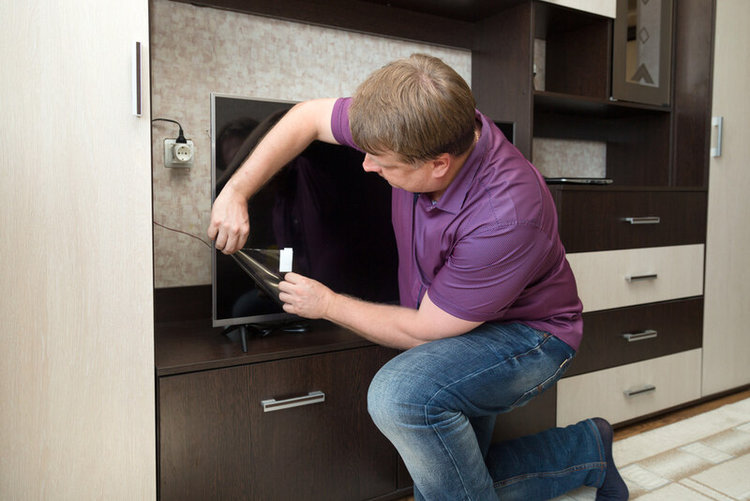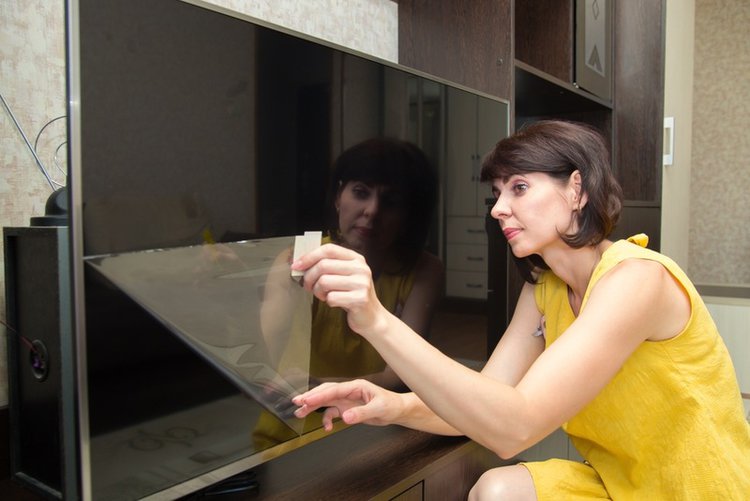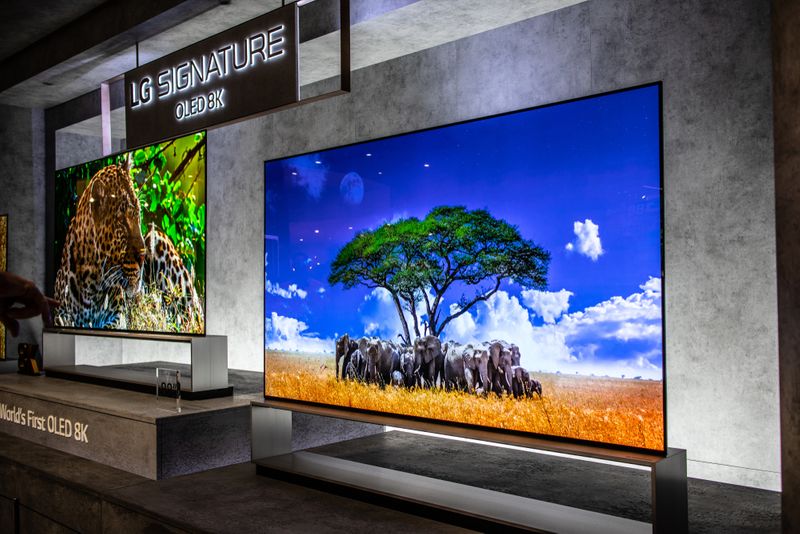TV Screen Protective Film: How to Safely Remove It (LG, Samsung, Sony, TCL)

What To Know
- Ensure the film on your TV is a removable protector, not a polarizing film, to avoid damage.
- LG OLED TVs have removable film; some Samsung and TCL do too, but Sony TVs don’t; look for barcodes or tabs to tell.
- Remove protective film gently using tabs on LG TVs or by heating and peeling on other brands, being careful not to touch the screen.
In this article, I’ll quickly show you how to identify and safely remove the TV screen protective film from brands like LG, Samsung, Sony, and TCL.
Let’s dive in!
Quick Navigation
Should I Remove the TV Protective Film?

Before removing a TV’s film, it’s important to confirm that it’s a protective film installed to prevent the screen from being scratched rather than a polarizing film, which controls screen glare.
You should never remove a TV’s polarizing film as this will destroy the TV’s screen, making it unusable. Additionally, the warranty policy will not cover the cost of repairs, as you damaged the TV yourself.
However, if your TV does have a protective film, it’s best to remove it, especially on LG OLED TVs. The protective film can inhibit the display panel’s heat dissipation, causing your TV to overheat and damaging the screen.
Let’s discuss which TV brands have a protective film on their screens.
LG
Every LG OLED TV comes with a protective film, so it’s completely safe to peel it off when removing the TV from its packaging.
Samsung
Only select Samsung TVs come with protective film. To verify if your Samsung TV has this film, check if the film has a barcode on it. If it does, then the film is protective and can be safely removed. If the film does not have a barcode, then it’s polarizing and should never be removed.
Sony
None of the current Sony TV models come with a protective film. So, if there is a film on your Sony TV, then it’s polarizing and should not be removed.
TCL
Some TCL models come with a protective film featuring a tab for easy removal. To confirm if your TCL TV has a protective film, check if it has a tab in the upper-right corner of the screen reading “Carefully remove protective material after installing the TV.”
How to Remove a TV’s Protective Film Properly?

Once you’ve confirmed that the film on your TV is indeed protective, then you’re ready to remove it. Remember, you must remove the protective film to ensure proper head dissipation and prevent overheating.
This process varies depending on the TV brand since they feature different types of protective films.
Let’s learn how to remove a TV’s protective film on LG OLED and other TV brands.
LG OLED TVs

Remove your LG OLED TV’s protective film as soon as you take it out of the box and before turning it on.
Step 1: Notice the two red tabs found on both of the screen’s bottom corners. When pulled, these tabs will gently peel away the protective film without damaging the screen.
Step 2: Hold one of the red tabs and pull it diagonally away from the screen to remove the protective film. Ensure you are gentle and go slowly to avoid knocking the TV over or pulling it off the stand. If possible, it’s a good idea to have a friend hold the TV in place while you remove the film.
Also, please avoid touching the screen with your fingers once the film is removed, as this will leave oily fingerprints on the screen which can be difficult to remove.
Other TVs
Step 1: Plug your new TV in and turn it on for a few hours. This will warm up the display panel and the film’s glue, making it easier to remove.
Step 2: If the TV has stickers or tabs on any of its corners, you can use them to peel away the film. Otherwise, you can stick a piece of scotch tape on one of the film’s corners and use it as a makeshift sticker or tab.
Please avoid trying to lift the film by picking at it with your fingernail, as you could damage the TV screen.
Step 3: Once you found or made the screen’s tab, use it to peel away the film. Remember to be gentle to avoid pulling the TV off its stand. We recommend pulling the tab diagonally so you can peel off the film in one go.
Once you’ve removed the film, feel free to dispose of it.
Watch the short video below demonstrating how to properly remove a TV’s stickers and protective film.
Wrapping Things Up
The protective film is placed on a TV to protect the screen during shipping and is meant to be removed once your TV is installed. Removing your TV’s protective film will not only encourage proper heat dissipation but also ensure the picture looks as clear as possible.
However, you should ensure the film you’re removing is not polarizing, as this will permanently damage your TV screen. Since TV screens are notoriously difficult and expensive to replace, you may have to buy a new TV altogether.
If your TV film has a barcode, tabs, or stickers on it, then it’s most likely protective.
Remember, Hisense TVs have protective covers instead of protective films, which must be left on the screen.
If you’re still unsure if your TV has a protective film, consult its user manual for its setup instructions or contact the manufacturer’s customer support for more information.
What’s your experience removing a TV’s protective film?
Let us know in the comments below!
Yesenia Achlim is a technical copywriter and editor with a focus on AV equipment. She aims to break down complicated topics and make technology accessible, no matter your technical expertise. When she’s not teaching you how to replace a projector lamp, you can find her reading and baking.

